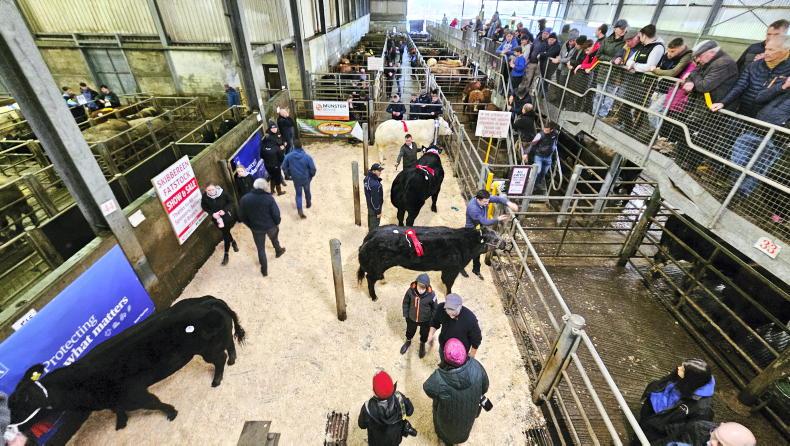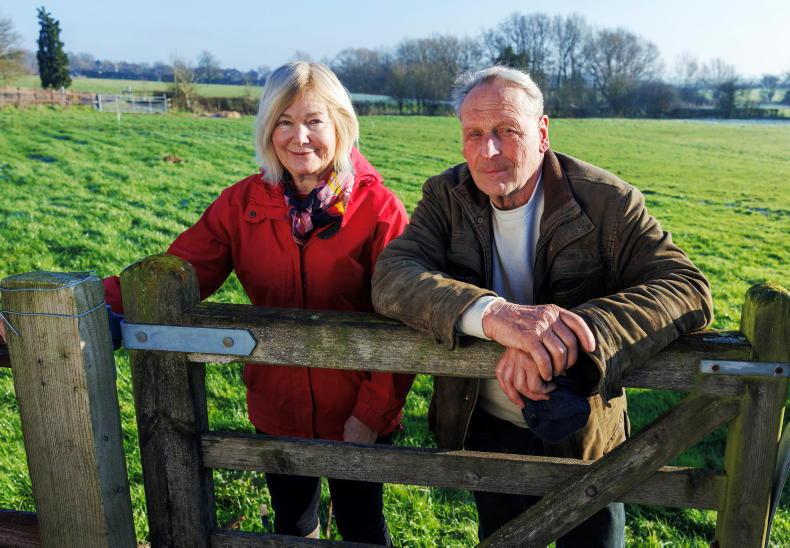We cut our main crop of silage late last week and got slurry out on most of it over the weekend. We were able to spread this ground with an umbilical system for the first time and it made a huge difference to the job. Some 65ac were spread in one day, with no wear and tear on roadways, no safety issues with tractors on back roads and a huge reduction in diesel fumes burnt.
We used a dribble bar system to spread, so the nitrogen loss to the air will be minimised and we can capture more of the nutrients in the soil. The advice is to give these fields a few days to absorb the slurry and then go back out with protected urea later this week for the second cut. All we need then is a drop of rain.
The grazing ground is suffering severely from moisture stress already and re-growths are very slow on paddocks grazed over the past week.
We’re feeding 3kg of concentrate at the moment and will keep this under review with rainfall and growth rates for the next few weeks. Protein is holding well at 3.54% so far, but will probably drop slightly as we graze some stronger grass over the next week.
Breeding season is going very well in the good weather, with over 97% of the herd submitted for AI so far after five weeks. We seem to have had a higher percentage of repeats after sexed semen than usual, but we will wait until we scan at the end of the season to get the final figures.
Off-farm, we are hearing and reading a lot of negative commentary about the Glanbia structure recently. We always see the tension bubble to the surface at times like this, when milk price comes under pressure, but this is often the most difficult time to address these issues.
We have seen huge efforts made within our national milk processors to keep all the milk collected, processed, marketed and keep payments flowing back to farm current accounts. We have also seen the supply of feed, fertiliser and other farm inputs continue without too much disruption throughout this difficult time.
The farmers appreciate the effort made by the tanker drivers, the factory workers, the farm business team, the store staff, the delivery drivers and the office workers in keeping everything moving smoothly. And hopefully, the off-farm team appreciate the efforts made on-farm to keep milk flowing out the gate.
The main issue is that the farmer’s income is totally dependent on milk price and can fluctuate hugely from year to year, while the staff get paid the same, no matter how milk price performs. Maybe we need to have a constructive chat about this down the road and maybe a portion of staff salary should be dependent on GII’s annual milk price performance.
We’ve also seen Glanbia’s 3.2% after-tax profit margin called into question in the Irish Farmers Journal recently. We are given all sorts of reasons why this margin needs to be maintained, from funding expansion, to debt servicing or for value add investments. The main reason for retaining the after-tax margin, I believe, stems from the need to maintain the value of the 40% stake in GII held by Glanbia PLC.
The PLC, by its nature, does not want to see the market value of its stake in GII fall under any circumstances and the value is dictated by how profitable the business is.
The margin is maintained on the back of a reduced milk price and although a 60% share of this margin finds its way back into milk price through the co-op, it is effectively taxed by both the Government and the PLC on the way through.
This model of setting the after-tax margin at the start of the season and letting that dictate all decisions for the rest of the year needs a lot more investigation and discussion.
Is the advice that this is the best option for the business coming from GII staff, co-op staff or PLC staff – or does anyone really know where one starts and the other finishes?
Read more
Farmer Writes: thoughts turn to silage
Farmer Writes: disappointing to see milk price cut
We cut our main crop of silage late last week and got slurry out on most of it over the weekend. We were able to spread this ground with an umbilical system for the first time and it made a huge difference to the job. Some 65ac were spread in one day, with no wear and tear on roadways, no safety issues with tractors on back roads and a huge reduction in diesel fumes burnt.
We used a dribble bar system to spread, so the nitrogen loss to the air will be minimised and we can capture more of the nutrients in the soil. The advice is to give these fields a few days to absorb the slurry and then go back out with protected urea later this week for the second cut. All we need then is a drop of rain.
The grazing ground is suffering severely from moisture stress already and re-growths are very slow on paddocks grazed over the past week.
We’re feeding 3kg of concentrate at the moment and will keep this under review with rainfall and growth rates for the next few weeks. Protein is holding well at 3.54% so far, but will probably drop slightly as we graze some stronger grass over the next week.
Breeding season is going very well in the good weather, with over 97% of the herd submitted for AI so far after five weeks. We seem to have had a higher percentage of repeats after sexed semen than usual, but we will wait until we scan at the end of the season to get the final figures.
Off-farm, we are hearing and reading a lot of negative commentary about the Glanbia structure recently. We always see the tension bubble to the surface at times like this, when milk price comes under pressure, but this is often the most difficult time to address these issues.
We have seen huge efforts made within our national milk processors to keep all the milk collected, processed, marketed and keep payments flowing back to farm current accounts. We have also seen the supply of feed, fertiliser and other farm inputs continue without too much disruption throughout this difficult time.
The farmers appreciate the effort made by the tanker drivers, the factory workers, the farm business team, the store staff, the delivery drivers and the office workers in keeping everything moving smoothly. And hopefully, the off-farm team appreciate the efforts made on-farm to keep milk flowing out the gate.
The main issue is that the farmer’s income is totally dependent on milk price and can fluctuate hugely from year to year, while the staff get paid the same, no matter how milk price performs. Maybe we need to have a constructive chat about this down the road and maybe a portion of staff salary should be dependent on GII’s annual milk price performance.
We’ve also seen Glanbia’s 3.2% after-tax profit margin called into question in the Irish Farmers Journal recently. We are given all sorts of reasons why this margin needs to be maintained, from funding expansion, to debt servicing or for value add investments. The main reason for retaining the after-tax margin, I believe, stems from the need to maintain the value of the 40% stake in GII held by Glanbia PLC.
The PLC, by its nature, does not want to see the market value of its stake in GII fall under any circumstances and the value is dictated by how profitable the business is.
The margin is maintained on the back of a reduced milk price and although a 60% share of this margin finds its way back into milk price through the co-op, it is effectively taxed by both the Government and the PLC on the way through.
This model of setting the after-tax margin at the start of the season and letting that dictate all decisions for the rest of the year needs a lot more investigation and discussion.
Is the advice that this is the best option for the business coming from GII staff, co-op staff or PLC staff – or does anyone really know where one starts and the other finishes?
Read more
Farmer Writes: thoughts turn to silage
Farmer Writes: disappointing to see milk price cut










SHARING OPTIONS